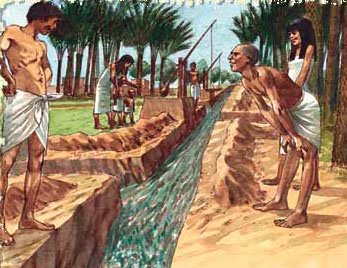
Gardening has a rich history that spans millennia, with civilizations around the world developing ingenious methods to cultivate crops and landscapes. One area where ancient wisdom continues to inspire modern practices is irrigation—the art and science of supplying water to plants efficiently. Exploring ancient irrigation techniques not only unveils the resourcefulness of our ancestors but also offers valuable insights that can enhance today’s gardens with sustainability and efficiency.




The Ingenious Techniques of Ancient Civilizations
Ancient civilizations, such as those in Mesopotamia, Egypt, China, and Mesoamerica, developed sophisticated irrigation systems to harness water for agriculture. In Mesopotamia, the cradle of civilization between the Tigris and Euphrates rivers, the Sumerians built canals and levees as early as 6000 BCE to control seasonal floods and irrigate crops. Their methods laid the foundation for later civilizations in the region, including the Babylonians and Assyrians, who further advanced irrigation techniques with the development of irrigation ditches and clay pipes.
In Egypt, the Nile River’s annual flooding provided fertile soil, but the ancient Egyptians also developed a network of canals and basins to distribute water to fields beyond the river’s reach. The construction of the Nile’s irrigation system played a crucial role in the success of agriculture, sustaining one of the most advanced civilizations of the ancient world.
Lessons for Modern Gardens
What lessons can we draw from these ancient irrigation techniques for our modern gardens? One of the key principles is the efficient use of water resources. Ancient systems often relied on gravity to move water, minimizing the need for energy-intensive pumping. Channels and canals were carefully engineered to distribute water evenly across fields, maximizing crop yields and minimizing water waste—a concept that resonates strongly with today’s emphasis on sustainable water management.
Ancient irrigation methods also highlight the importance of understanding local climate and soil conditions. By adapting irrigation practices to match natural water availability and soil characteristics, ancient farmers optimized plant growth and productivity. This approach remains relevant as modern gardeners strive to create water-efficient landscapes that thrive in their specific environmental contexts.
After delving into ancient irrigation practices in the Fertile Crescent, it becomes clear how pivotal this region was in shaping agricultural history. The sophisticated canal systems devised by ancient Mesopotamian civilizations like the Sumerians not only transformed the arid landscapes into fertile farmlands but also laid the groundwork for sustainable water management strategies. Their ingenuity in harnessing the Tigris and Euphrates rivers for irrigation not only ensured food security but also fostered societal advancements that resonate with modern efforts towards ecological stewardship and resource efficiency.
“Ancient irrigation systems were indispensable, serving as the cornerstone of agricultural prosperity and societal advancement, ensuring sustainable water distribution vital for civilizations to flourish.”
Applying Ancient Wisdom to Modern Gardens
Today, gardeners can integrate ancient irrigation principles into their gardening practices in several ways. Implementing techniques such as drip irrigation, which delivers water directly to plant roots, mimics the efficiency of ancient systems that focused water where it was most needed. Rainwater harvesting systems, inspired by ancient cisterns and reservoirs, capture and store rainwater for later use during dry periods, reducing reliance on municipal water supplies.
Moreover, incorporating native plants and drought-tolerant species into garden designs reflects the ancient practice of selecting crops that were well-suited to local conditions. This not only conserves water but also promotes biodiversity and resilience in the garden ecosystem.
Conclusion
Creating the perfect garden is a journey of discovery and cultivation, guided by ancient wisdom and modern innovation. By incorporating these ancient insights into modern gardening practices, we pave the way for gardens that thrive harmoniously with nature, benefiting both present and future generations.
Last modified: June 17, 2024



